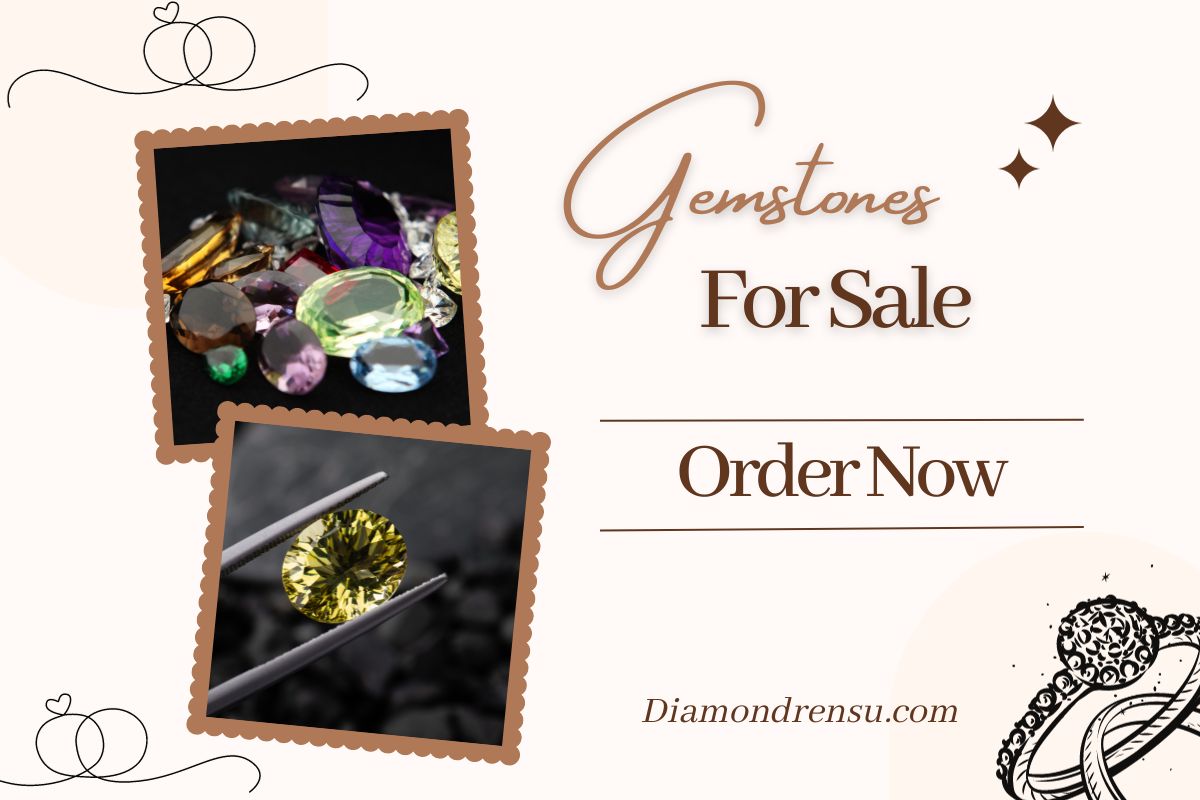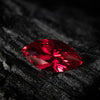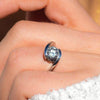
Can You Scratch a Diamond? Uncovering the Truth Behind Diamond Durability
Diamonds are renowned for their unmatched hardness and quality, setting them apart as the champions in the world of gemstones. With a score of 10 on the Mohs scale of hardness, diamonds are effectively the hardest natural material found on Earth. This remarkable durability is one of the reasons why diamonds have become symbols of lasting love and endurance. But despite their resilience, the question arises: can a diamond actually be scratched?
We acknowledge a common misconception that diamonds are indestructible. In reality, while they are resistant to scratches from most substances due to their superior hardness, diamonds can be scratched by other diamonds. This is significant in jewelry settings where diamonds could come into contact with each other. Furthermore, it’s essential for us to differentiate between scratches and other types of damage like chipping or cleaving, which diamonds are more vulnerable to, especially along natural points of weakness in their structure.
When considering the potential to scratch a diamond, we must also consider the quality of the diamond itself. While the inherent hardness remains consistent across all diamonds, aspects like the cut, shape, and the presence of any inclusions can influence a diamond's overall resilience. It's crucial to handle diamonds with the care that their value and quality command.
Properties of Diamonds
In our discussion of diamonds, it's imperative to focus on their atomic make-up, unparalleled hardness, and exceptional physical properties. We'll delve into how these characteristics render diamonds highly resistant to scratches, alongside their unique thermal and electrical traits, and what clarity means in terms of inclusions within these precious stones.
Atomic Structure and Bonds
Diamonds are renowned for their remarkable atomic structure. Each carbon atom is covalently bonded to four other carbon atoms in a tetrahedral lattice structure. This strong, repeating pattern is what gives diamonds their extraordinary durability and luster.
Diamond Hardness and Mohs Scale
Hardness is a defining trait of diamonds, placing them as the hardest material on the Mohs Hardness Scale. With a ranking of 10, diamonds surpass all other minerals in their ability to resist scratching. No other naturally occurring substance can scratch a diamond, except another diamond.
Scratch Resistance of Diamonds
When it comes to scratch resistance, diamonds are virtually peerless. While they are incredibly scratch-proof to materials ranked lower on the Mohs scale, diamonds are not impervious to all surface scratches. Extreme force or contact with another diamond can inflict damage.
Thermal and Electrical Conductivity
Diamonds are not just visually stunning; they also have remarkable physical properties. With high thermal conductivity, diamonds can disperse heat rapidly. Conversely, their electrical conductivity is quite low, making them excellent insulators, unless they contain specific impurities that alter this characteristic.
Clarity and Inclusions
Clarity is a measure of the flaws, or inclusions, within a diamond. These imperfections, which can be internal or on the surface, affect the overall appearance and value of the stone. A diamond with fewer inclusions is considered to have higher clarity and is more sought-after for diamond cuts used in jewelry.
Diamond Durability Versus Other Materials

| Gemstone | Durability | Hardness |
|---|---|---|
| 💎 Diamond | Very durable, resistant to scratches and abrasion | 10 on the Mohs scale |
| 🟢 Emerald | Less durable, prone to scratches and chipping | 7.5-8 on the Mohs scale |
| 🔵 Sapphire | Moderately durable, resistant to scratches but can chip | 9 on the Mohs scale |
| 🟡 Topaz | Moderately durable, susceptible to scratches and abrasion | 8 on the Mohs scale |
| 🟠 Citrine | Relatively durable but may scratch easily | 7 on the Mohs scale |
In evaluating the durability of diamonds, we consider both the potential for damage from other gems and the interaction with various metals that are commonly used in jewelry. Diamonds are renowned for their hardness, but they are not indestructible.
Comparison with Other Gemstones
Diamonds rank highest on the Mohs scale of hardness—a scale that rates gemstones and minerals based on their ability to resist scratching—with a score of 10. To understand how diamonds measure up to other gemstones in terms of durability, we must differentiate between hardness and toughness. Hardness defines resistance to scratches, while toughness relates to resistance to breakage.
-
Sapphire and Ruby: These gemstones are varieties of the mineral corundum and score a 9 on the Mohs scale. They are highly scratch-resistant but still fall short of diamond's resistance.
-
Moissanite: A naturally occurring mineral also used as a diamond substitute in jewelry, moissanite has a hardness of 9.25, making it very resistant to scratches, albeit not as resistant as diamond.
-
Cubic Zirconia: With a score of 8-8.5 on the Mohs scale, cubic zirconia is less hard than a diamond and can be scratched relatively easily when compared with diamonds.
It should be noted that all gemstones, including diamonds, can suffer from chipping or cleaving if struck with significant force, despite their hardness.
Comparison with Other Metals
The interaction between diamonds and metals is significant, especially in jewelry settings where metals are used to house and protect gemstones.
-
Gold and Silver: These are softer metals with Mohs hardness ratings of 2.5-3 for gold and 2.5 for silver. A diamond can easily scratch these metals and is often set in them without any risk of being scratched in return.
-
Steel: A common metal in tools and machinery, steel has a hardness of approximately 4-4.5 and thus cannot scratch a diamond.
-
Titanium: Known for its strength and low density, titanium's hardness varies around 6 on the Mohs scale, making it incapable of scratching a diamond.
-
Tungsten and Tungsten Carbide: Tungsten has a hardness of about 7.5, and tungsten carbide, a compound made from tungsten and carbon, is even harder, typically around 8.5-9. Despite their significant hardness, they cannot scratch a diamond. However, they offer substantial resistance to scratches themselves.
In summary, while a number of gemstones and metals possess considerable degrees of hardness and durability, none can surpass or even equal the scratch resistance of a diamond, making it supremely suited for jewelry that exudes both elegance and resilience.
Assessing Diamond Authenticity

When it comes to diamonds, determining their authenticity is critical for both quality assurance and investment purposes. We'll explore how to differentiate between real and fake diamonds, and we'll outline reliable diamond testing methods.
Real vs. Fake Diamonds
Authenticity: is a cornerstone in the gemstones market, especially for diamonds. Natural material mined from the Earth is often considered more valuable than lab-grown diamonds. However, lab-grown diamonds are identical in chemical composition and physical properties, and thus they are also authentic. The term "fake diamond" typically refers to imitations like cubic zirconia or moissanite, which resemble diamonds but differ in properties.
Quality: High-quality diamonds are durable, with the highest known hardness of any natural material, allowing them to scratch virtually any other substance without being scratched themselves. This principle forms the basis for the scratch test, an old but somewhat reliable method to check for a diamond's authenticity:
- Real Diamond: Can scratch surfaces without being scratched.
- Fake Diamond: May get scratched or fail to scratch certain surfaces.
Diamond Testing Methods
We employ a variety of testing methods to verify diamond authenticity:
-
Scratch Test: As mentioned above, a real diamond should be able to scratch other surfaces, including gemstones that are lower on the Mohs scale of hardness.
-
Thermal Conductivity: Diamonds conduct heat effectively. A diamond rapidly dissipates heat and thus will not stay warm to the touch after being heated. Fake diamonds, made of dissimilar materials, tend to retain heat longer.
To complement these tests, experts may use specialized equipment, such as a diamond tester, which measures thermal or electrical conductivity, and a jeweler's loupe to inspect the stone for inclusions, which are commonly found in natural diamonds. Combining these methods provides us with a comprehensive approach to assess the authenticity of a diamond, helping to ensure that the quality and value of the gemstone meet our expectations for investment and personal use.
Diamond Care and Maintenance

Maintaining the elegance and integrity of diamond jewelry involves regular cleaning, safeguarding against damage, and addressing any wear and tear. We understand the importance of each aspect in preserving the diamond's brilliance and structural integrity.
Cleaning and Polishing Diamonds
To keep our diamonds sparkling, we adhere to a gentle yet effective cleaning routine:
- Create a Solution: Mix warm water with a few drops of mild dish soap that doesn’t contain moisturizers or bleach.
- Soak your Diamond: Allow the jewelry to sit in the solution for a short time to loosen any dirt.
- Soft Brushing: Gently brush the diamond with a soft toothbrush to remove residue.
- Rinse: Wash the diamond under warm running water to clear away the loosened dirt.
- Dry: Pat the jewelry dry with a soft, lint-free cloth.
Occasionally, we might opt for a professional polishing service to restore the diamond's original brilliance, particularly when dealing with surface-level scratches.
Protecting Diamond from Damage
Diamonds, despite their hardness, can experience damage if not handled with care. To mitigate risks, we follow these protective measures:
- Storage: We keep diamonds separated to prevent scratching, especially from other pieces with diamonds, as they can scratch each other.
- Settings: Regular checks on prongs and settings, especially raised settings which are more prone to snagging and impacts, ensure that diamonds remain secure.
- During Wear: We avoid wearing diamond jewelry during high-impact activities to prevent chips or fractures.
Repairing Damaged Diamonds
If a diamond does sustain damage, such as a chip or a scratch, we manage repairs through:
- Recutting or Repolishing: Trained professionals can remove superficial damage from a diamond's surface through recutting or repolishing.
- Resetting: A damaged setting can be repaired or replaced to prevent further harm to the diamond.
- Carat Weight: We contemplate that recutting a diamond to remove a significant chip may result in a slight reduction in carat weight.
In summary, proper care and maintenance ensure our diamond jewelry remains an enduring emblem of elegance and fortitude.
Selecting the Right Diamond Jewelry

When seeking out the perfect diamond piece, whether for expressing our love through an engagement ring or choosing a stunning solitaire diamond, attention to detail in settings and cut can make all the difference to both its aesthetic and its longevity.
Understanding Diamond Settings
Solitaire Diamond: We often recommend a prong setting for solitaire diamonds in engagement rings, as it allows maximum exposure of the diamond to light, enhancing its brilliance. Commonly, solitaires feature four to six prongs; with more prongs offering increased security for the diamond.
Gem Placement: For other precious gems accompanying the diamond, a bezel setting can be suitable as it encases the gem's edges, providing protection and a sleek, modern look. It's crucial to ensure the setting complements the diamond, not just in appearance but also in providing security and durability.
Choosing the Carat and Cut
-
Carat Weight: A diamond's weight, measured in carats, affects its size and, as a result, its visual presence on a ring. We should consider the ring wearers' preferences and lifestyle for an appropriate carat weight that ensures comfort and practicality.
-
Diamond Cut: A well-cut diamond will display the stone's natural beauty to its fullest potential. We advocate for cuts that reflect light well, such as the round brilliant cut, which is renowned for its ability to produce maximum sparkle. If we're seeking something less traditional, alternative cuts like the emerald or pear cut can offer unique, yet no less stunning, visual appeal.
In evaluating quality, recall that a high carat diamond with a poor cut can appear dull, while a smaller, well-cut diamond can have exceptional brilliance. Our choice should balance carat weight with the quality of the cut to find a diamond that meets our vision of beauty and value.
Diamonds in Modern Culture and Symbolism

In our exploration of modern culture, we cannot overlook the poignant role of diamonds. These precious stones are not merely symbols of love or financial prospects; their embedded value crosses cultural thresholds and societal norms.
Diamonds as a Symbol of Love
We witness diamonds most commonly as central elements in engagement rings. Their robustness and lasting shine metaphorically represent the durability and brightness of love. In Western culture specifically, the diamond engagement ring has become a near-universal symbol of the promise of marriage. This tradition, bolstered by compelling advertising campaigns, knits together the notions of romance and commitment with the glistening allure of a diamond.
- Quality and Craftsmanship: When selecting a diamond for jewelry, especially rings, the emphasis is on its quality, which is assessed by the well-known four Cs: cut, color, clarity, and carat weight.
- Cultural Significance: Over time, the practice of proposing with a diamond ring has become deeply entrenched in cultural rituals, signifying not only a pledge of lifelong union but also a gesture of profound significance.
Diamonds as an Investment
Apart from their undeniable role in the expression of love, diamonds serve as a resilient investment. Diamonds' rarity and enduring desirability underpin their value in the marketplace, making them an attractive option for investors.
- Value Preservation: The high value-to-volume ratio of diamonds can make them appealing as a form of preserving and transferring wealth.
- Market Dynamics: Unlike other commodities, the value of diamonds doesn't widely fluctuate with market conditions, thus often providing stability over time.
Jewelry designed with diamonds not only holds sentimental value but can also be seen as a financial safeguard, capable of withstanding the test of time. Our understanding of diamonds, as shaped by both culture and commerce, endows these gemstones with a complex, multifaceted significance that goes beyond the conventional.
Also Read
Frequently Asked Questions
In this section, we address some common concerns and queries regarding the durability of diamonds and how to identify damage to these precious stones.
What does a scratched diamond look like?
A scratched diamond will show visible marks on its surface. These marks may appear as fine lines, which could interfere with the stone's light performance and overall appearance.
Can a diamond be scratched by any metal object?
Metal objects cannot scratch a diamond because they are much softer compared to diamonds, which are the hardest natural mineral and rank at the top of the Mohs Hardness Scale with a hardness of 10.
Is it possible to scratch a diamond with sandpaper?
No, sandpaper cannot scratch a diamond. Sandpaper's hardness ranges between 7 and 9 on the Mohs scale, making it softer than a diamond, which ranks as a 10.
Can lab-grown diamonds be scratched as easily as natural diamonds?
Lab-grown diamonds have the same chemical and physical properties as natural diamonds, including their scratch resistance. They are just as hard as natural diamonds and can similarly resist scratches.
How can you tell if a diamond is real or scratched?
A genuine diamond's incredible hardness lends it scratch resistance to most materials. A scratch test involves attempting to scratch the surface with another hard substance; a real diamond should remain unscathed. Visual inspection under magnification can also help to identify if there are any scratches.
What are the methods to repair a scratched diamond?
Diamonds that are scratched can often be polished by a professional to remove or reduce the appearance of scratches. However, this process may slightly reduce the stone's carat weight.
Checkout some of our top collections:
Leave a comment
Please note, comments must be approved before they are published.










